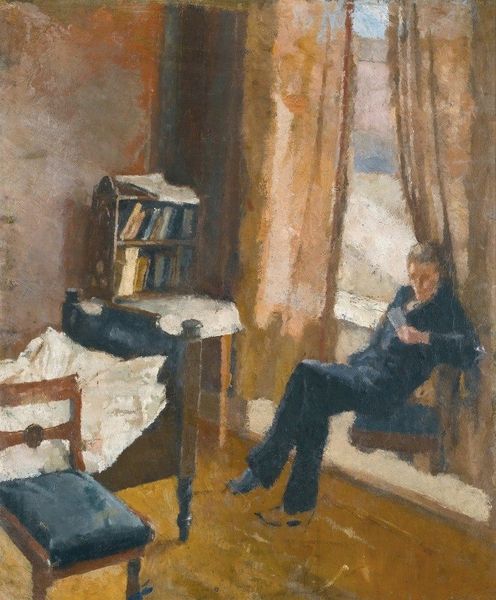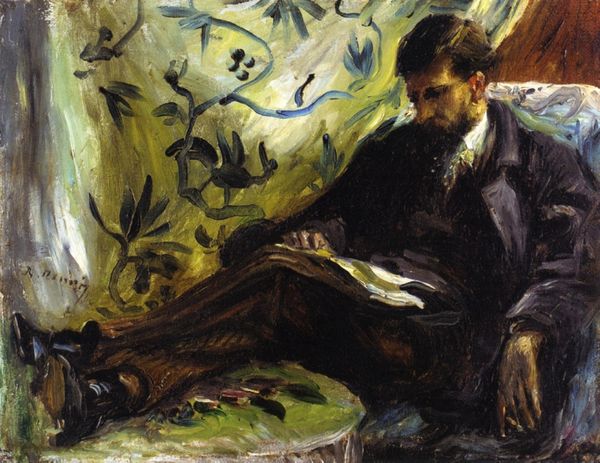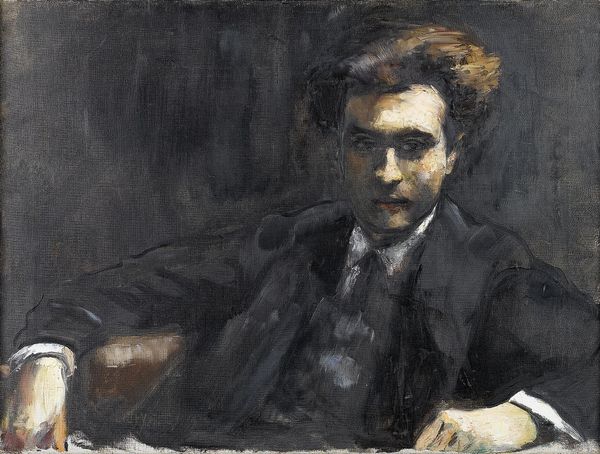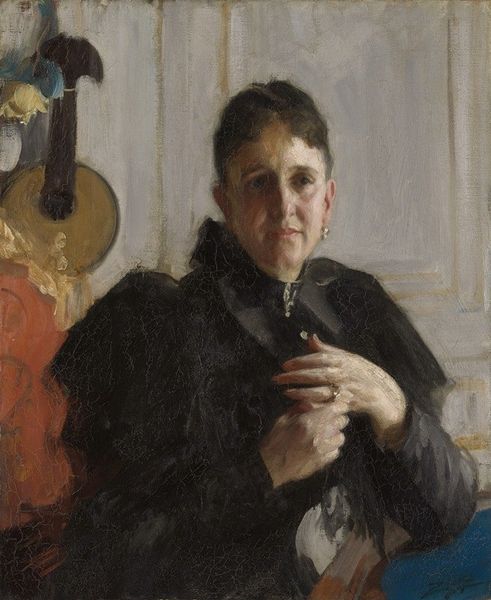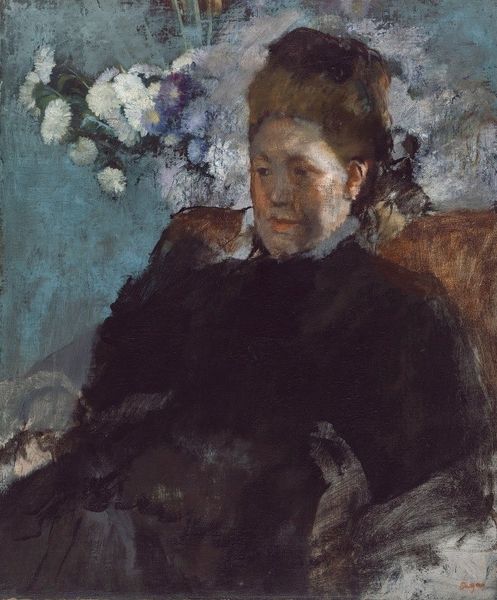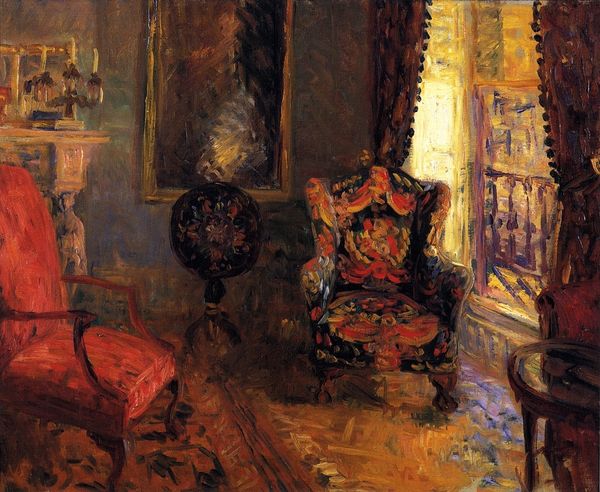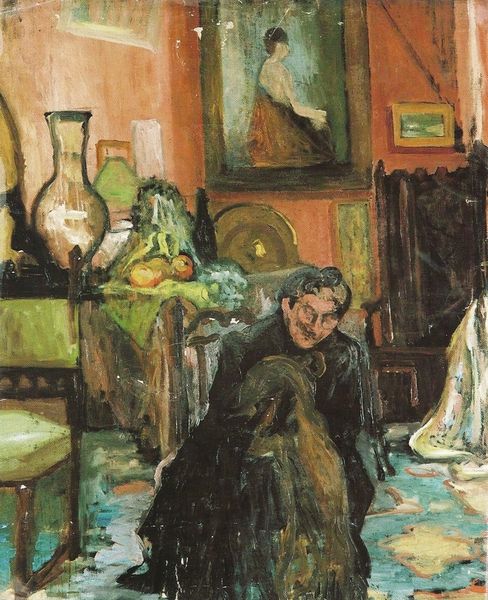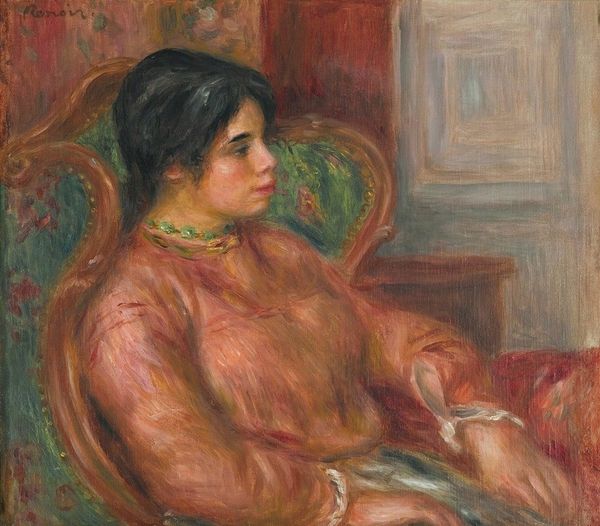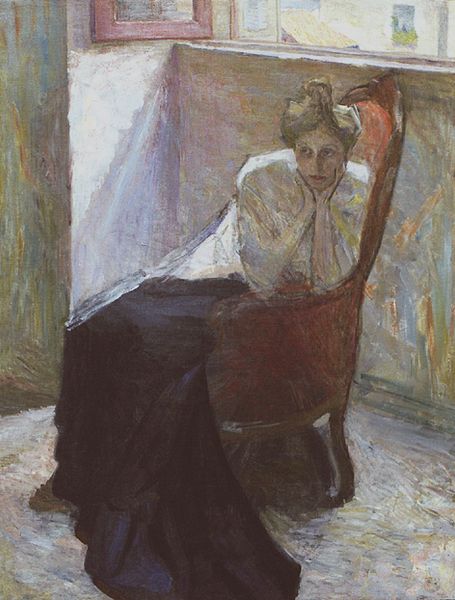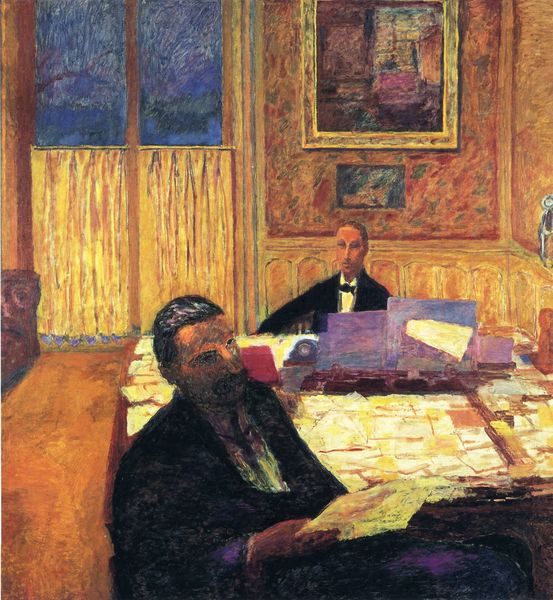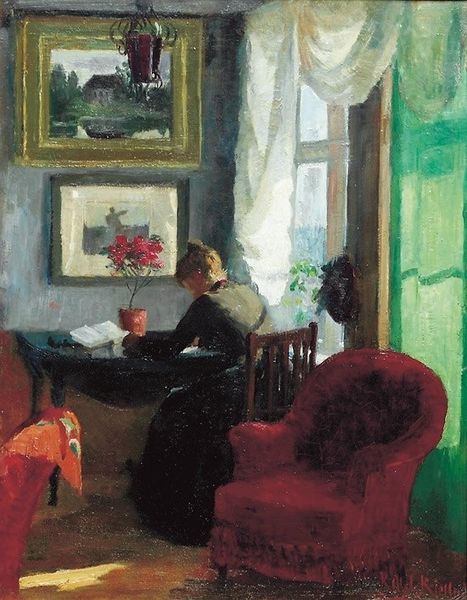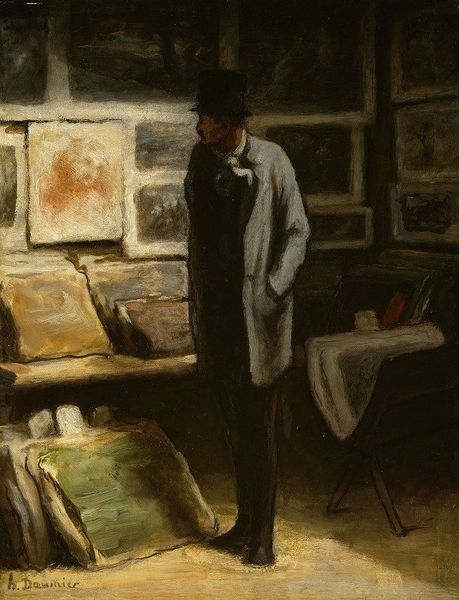
#
figurative
#
graffiti art
#
street art
#
painted
#
possibly oil pastel
#
neo expressionist
#
acrylic on canvas
#
street graffiti
#
spray can art
#
urban art
#
abstract character
Copyright: Public Domain: Artvee
Curator: Here we have Gustave Caillebotte's "Portrait de Georges Roman," painted in 1879. Editor: Immediately, I notice how contained the figure feels. The palette is quite muted, and Roman is almost swallowed by his surroundings—the heavy chair, the shadowed room. Curator: Caillebotte was deeply engaged with representing modern life and the emerging bourgeoisie. This portrait, I believe, reflects anxieties about masculinity and social positioning at the time. Consider the subtle tensions between tradition and nascent social changes reflected by its composition. Editor: Definitely, that buttoned-up suit suggests the sitter is striving to conform, but the way Caillebotte uses these swirling brushstrokes around him... it speaks to inner turmoil, perhaps a disconnect with conventional societal expectations. And the single empty chair to the right echoes his loneliness. Curator: It is also insightful to think about Roman's relationship with Caillebotte, how this connection between artist and subject informs their portrayals. Caillebotte frequently challenged academic conventions while coming from that very class. Editor: Indeed, looking closely, I detect how the diffused light filtering through what seems to be a lace curtain suggests hidden knowledge. It's not quite illuminating Roman, but it certainly creates a layer of introspection and reflection on him. What memories and associations might the lace conjure, what traditions might he have had? Curator: A great observation, which brings to the fore the social construction of interiors in domestic spaces, particularly concerning what would have been considered, even dictated, proper male roles and expressions of identity at the time this was painted. Editor: Right. There's a distinct melancholy to it all, isn't there? That one red chair interrupts the dim palette like a muted exclamation of solitude. Curator: Yes. These symbols act as conduits of emotions felt at that very pivotal cultural moment. They invite us to unpack what modern identity and personal positioning meant then and how they still shape us now. Editor: So many subtle symbols adding up to create a potent portrait, truly. Curator: Absolutely; the painting, therefore, is a document—not simply of one man but of a much larger societal shift.
Comments
No comments
Be the first to comment and join the conversation on the ultimate creative platform.
